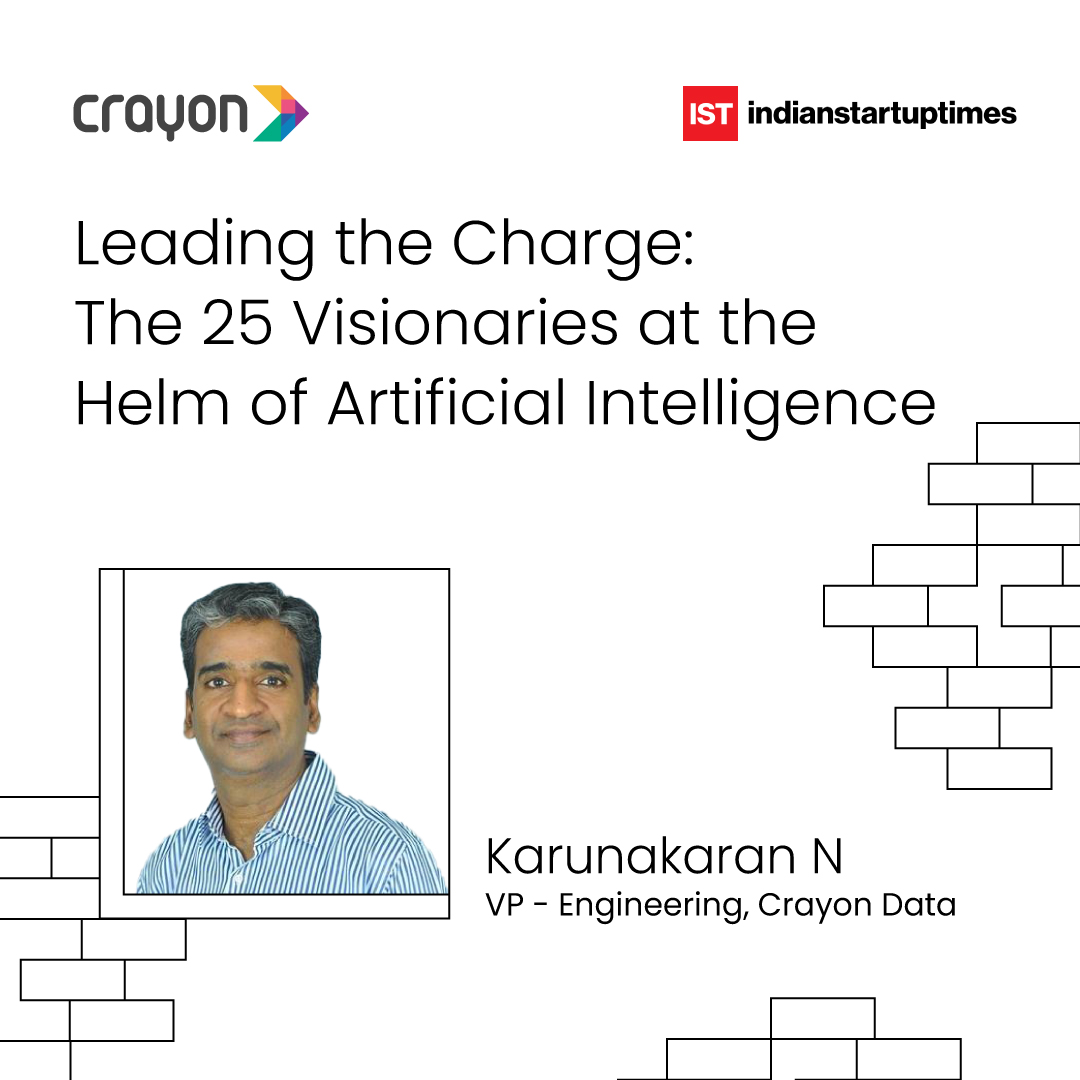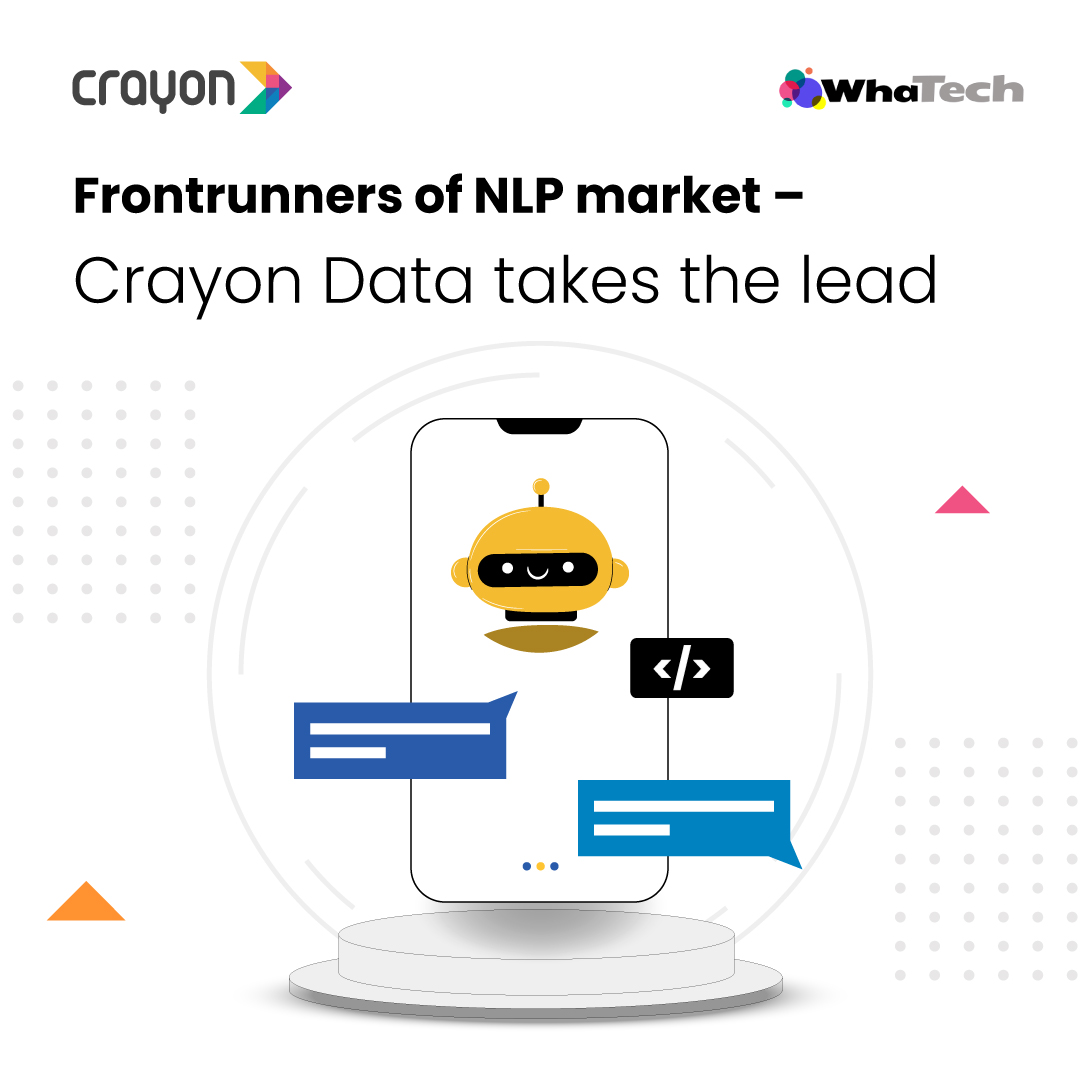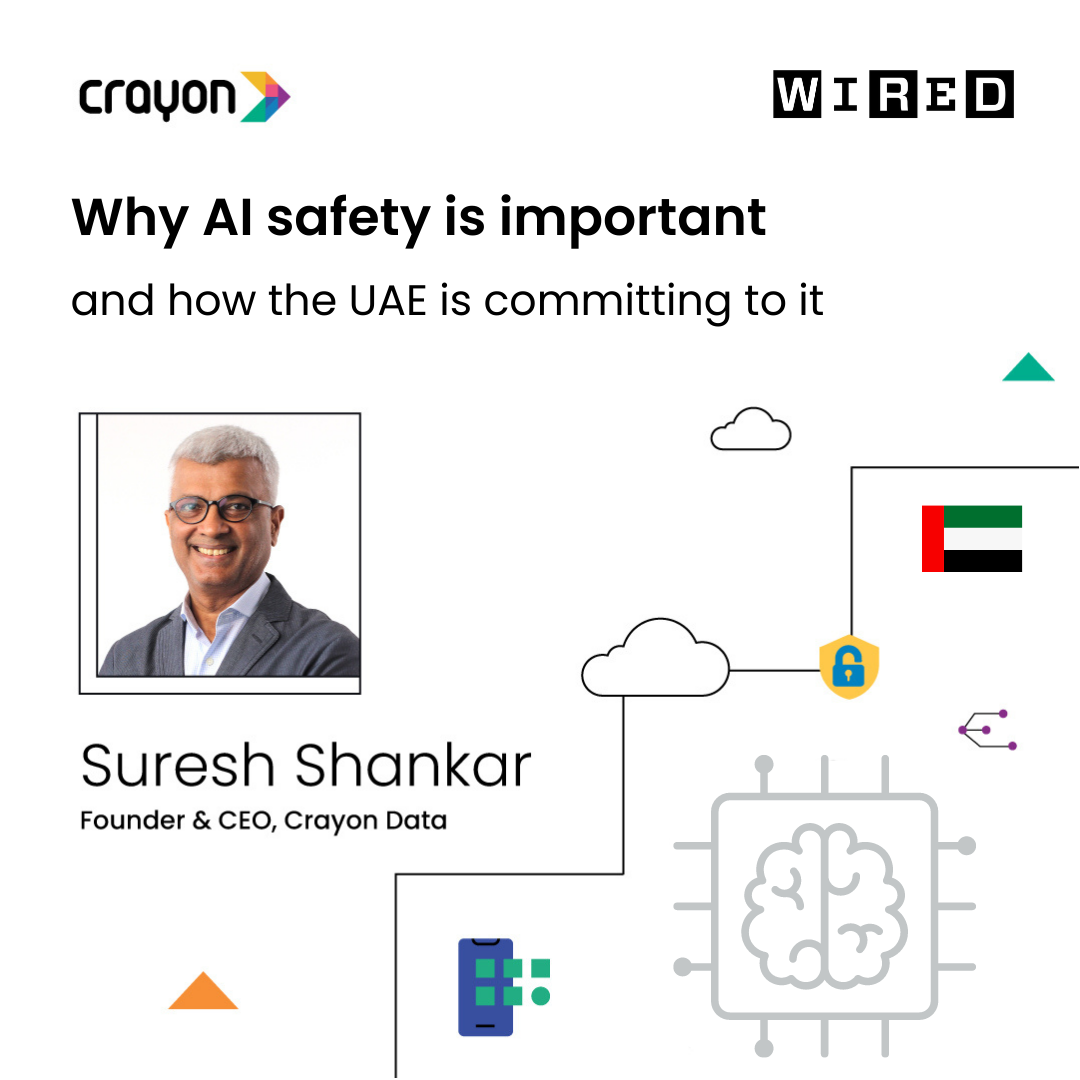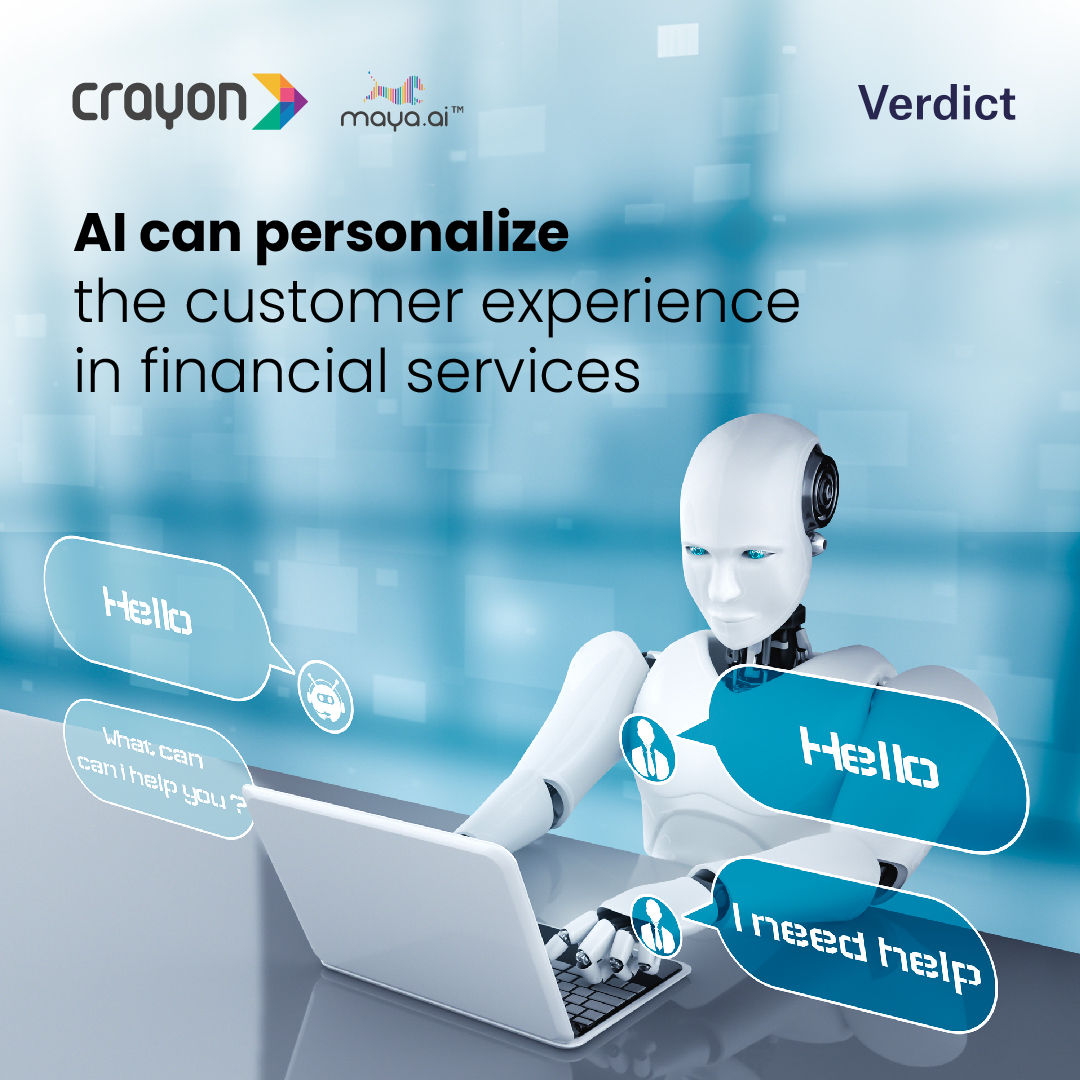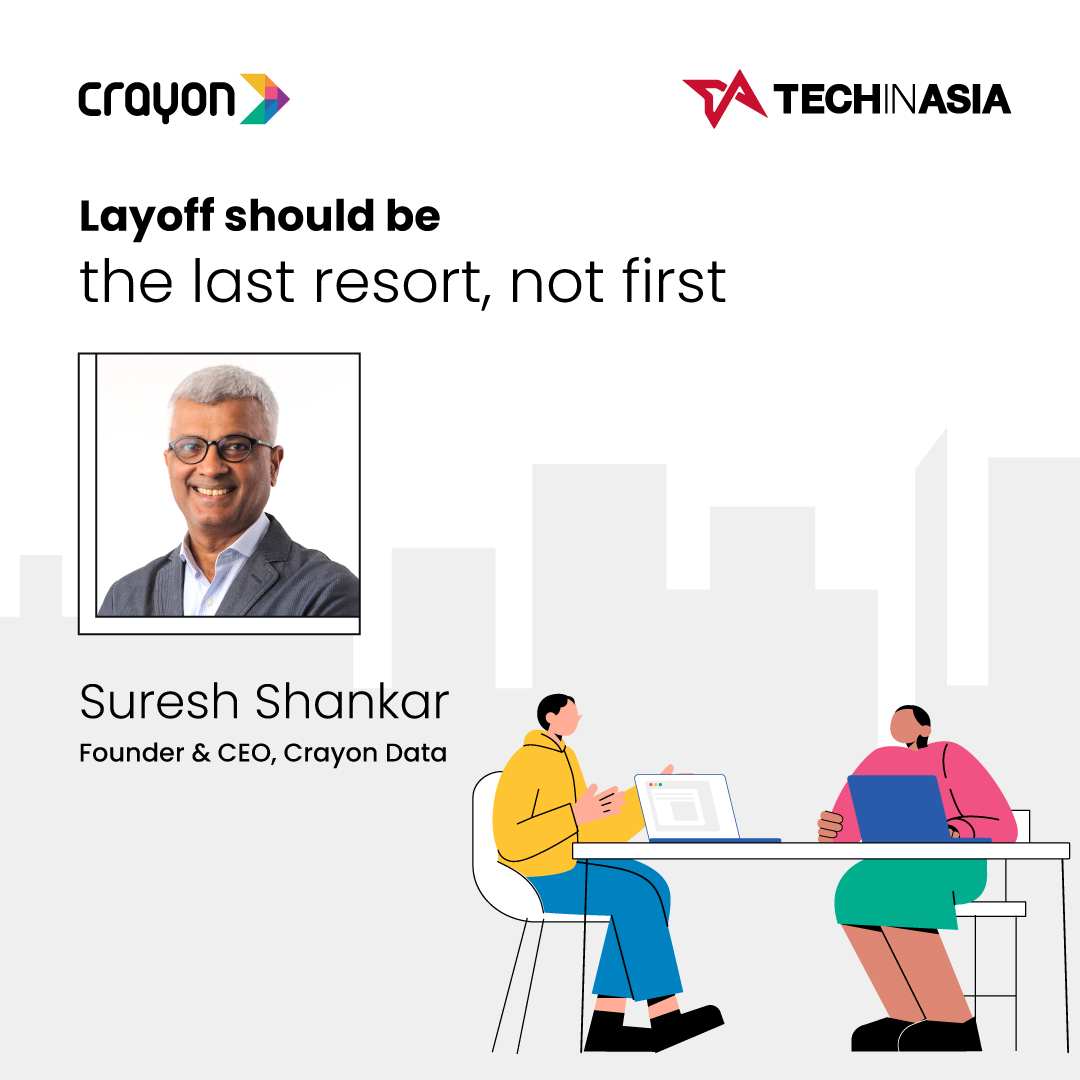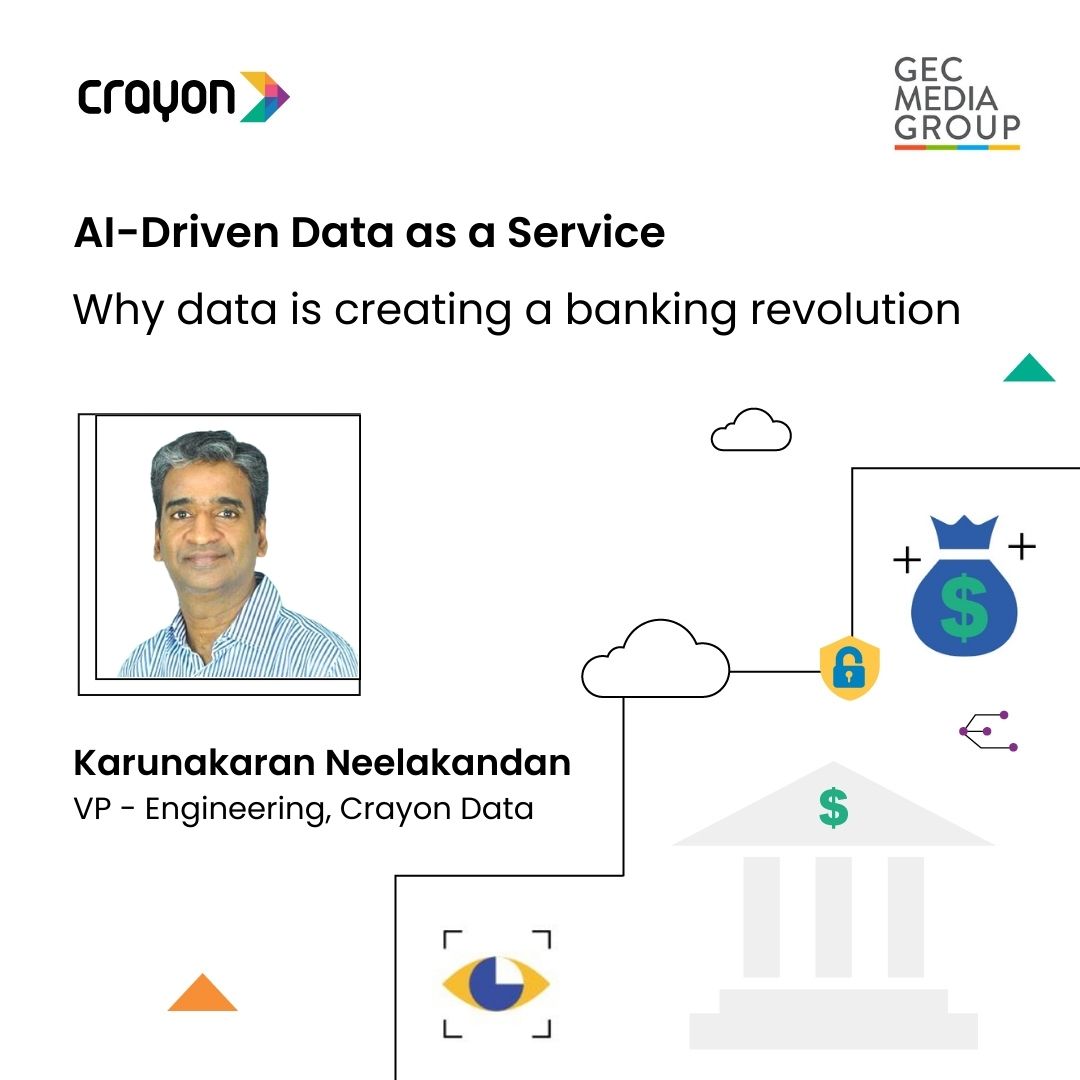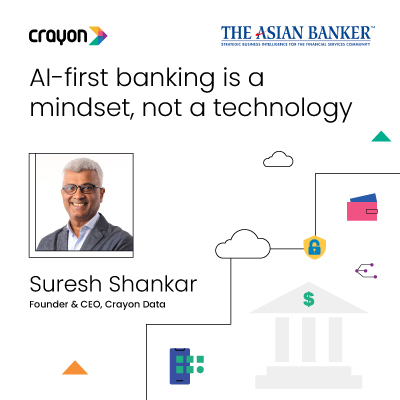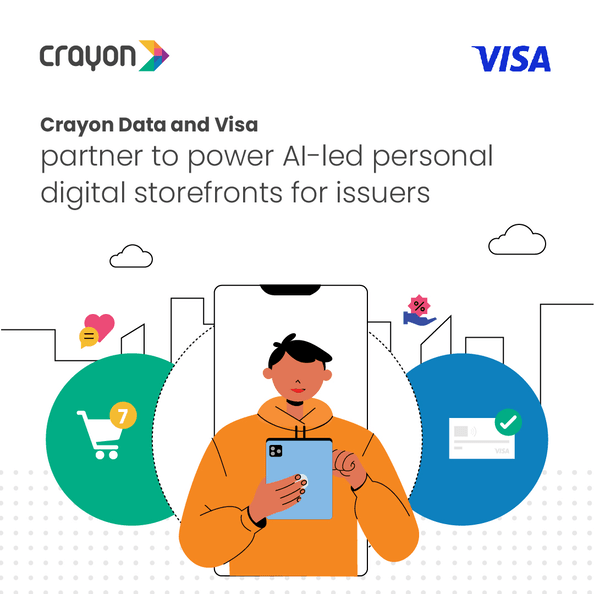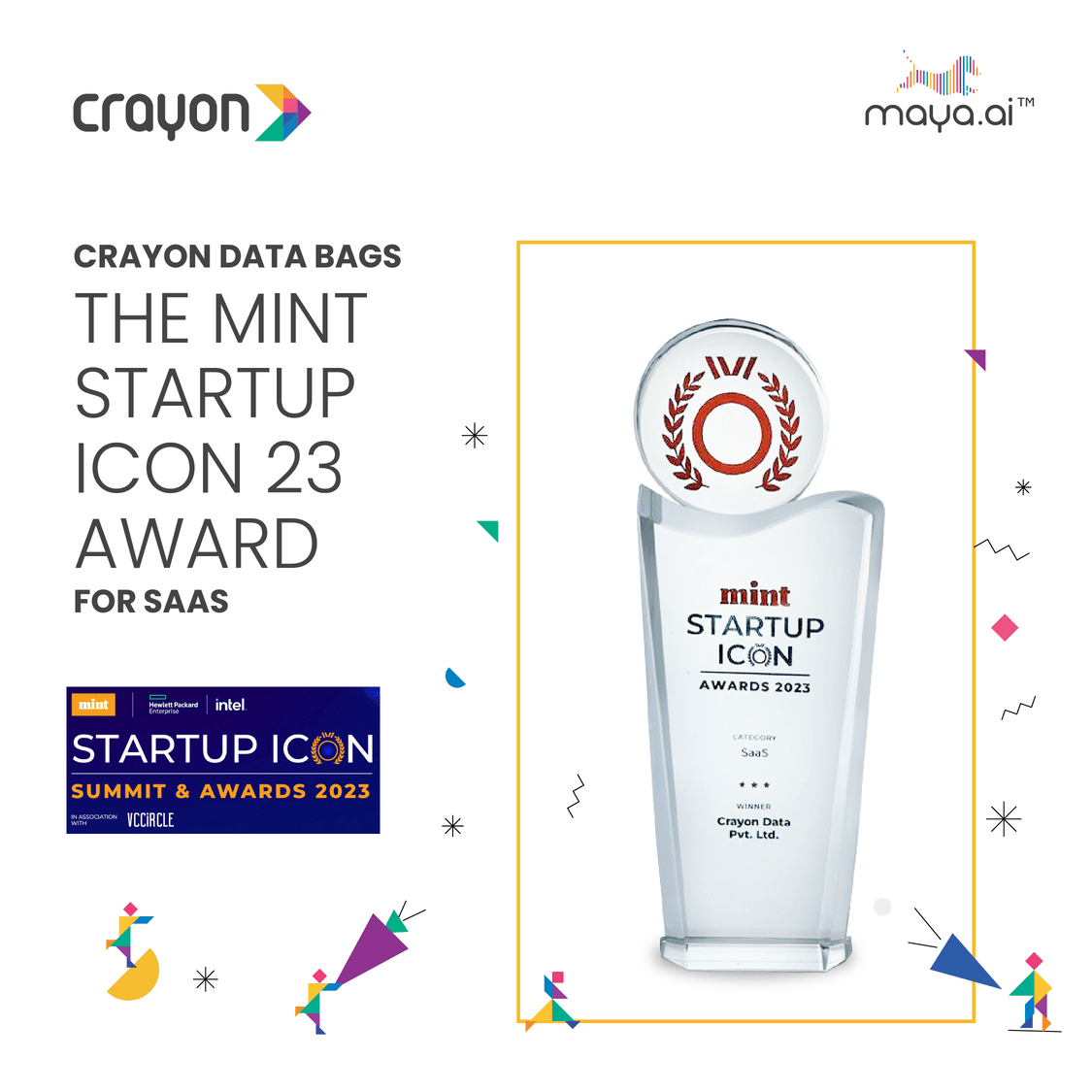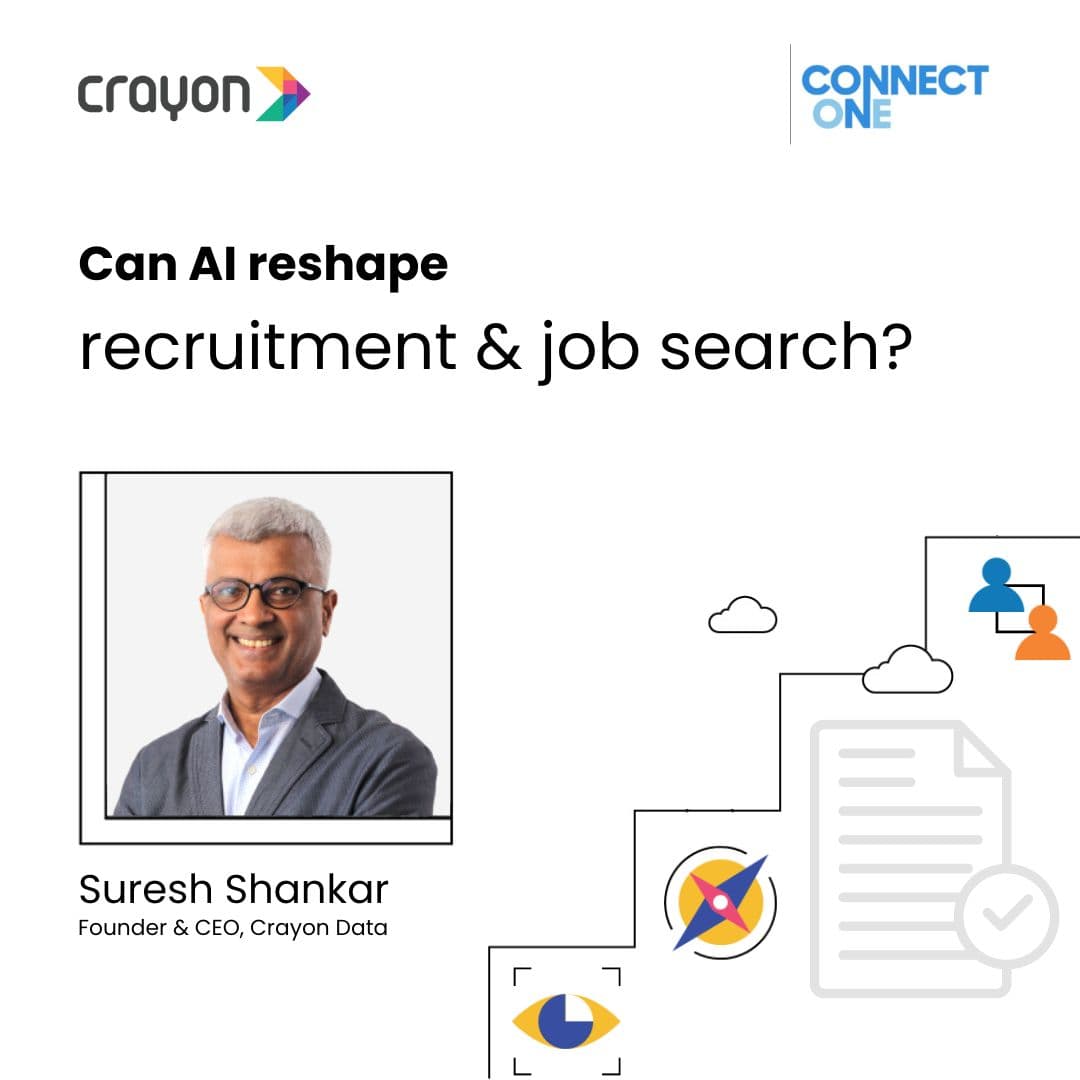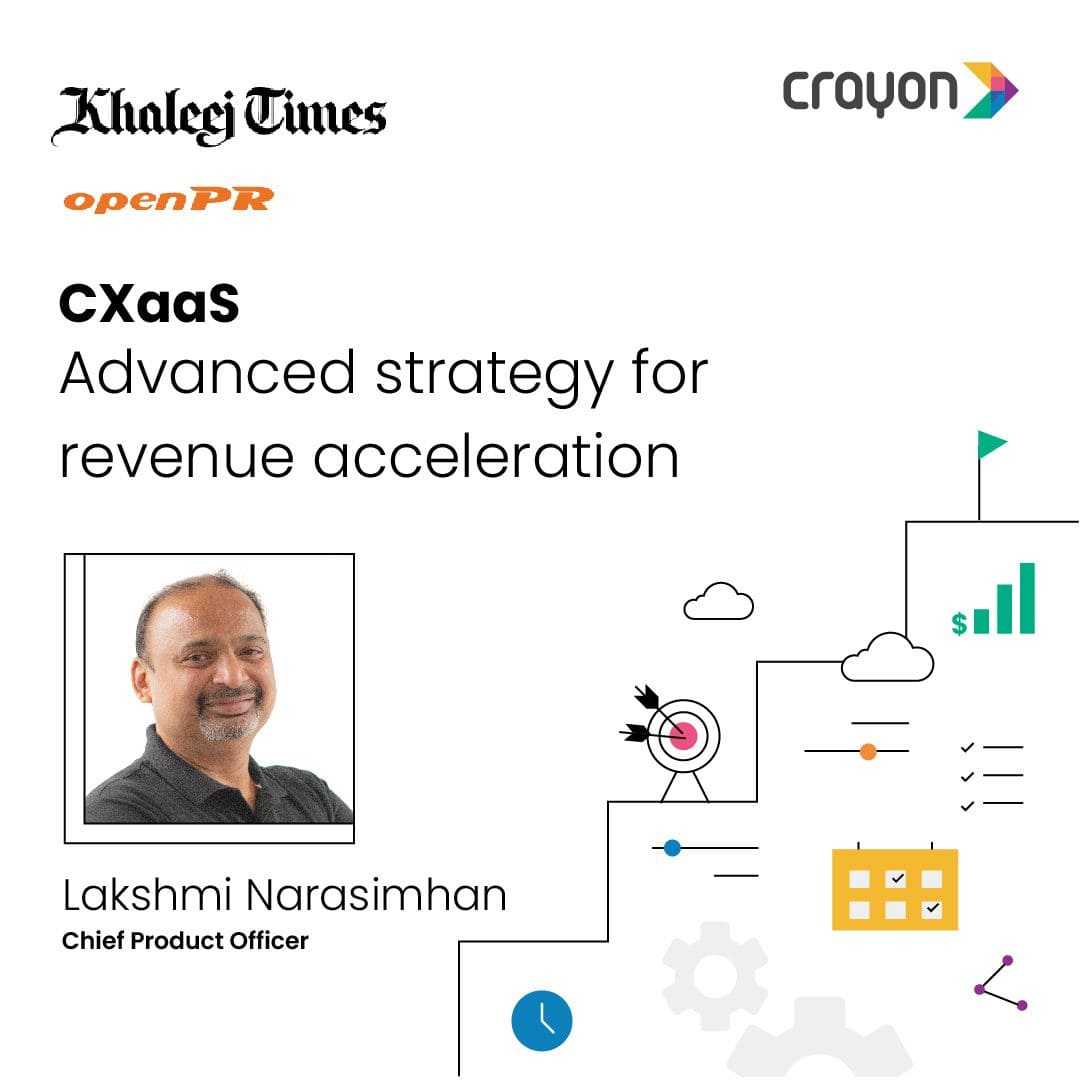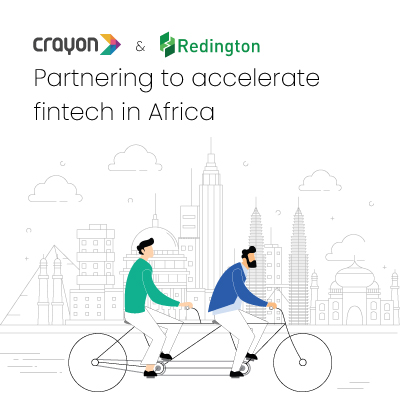“To us, transactions are the best communicator of who you are as a customer”
Vidhyashankar Sriram, our VP of Client Solutions, joins Prashant Malkani on the podcast #Transformarketing. In this interaction, they talk about what Big Data is, it’s scope in marketing, and some interesting use cases of how Big Data can help firms with personalization.
Prashant Malkani is a marketing enthusiast with a rich experience of 11 years in digital marketing, data analytics, and marketing technology. Currently, he is a Managing Consultant at MasterCard. His interactions pave the way for some insightful marketing revelations to his audience.
The ‘Transformarketing’ podcast aims at centralizing marketing intelligence from diverse domains. Prashant’s well-angled questions and the guests’ expertise helps listeners keep up with latest developments in the marketing space.
Check out the conversation between Vidhyashankar and Prashant below:
Here’s the transcript of the conversation:
0:00
Hi everyone and welcome back to the transformarketing podcast season two. This is the second episode that we are shooting for and as I think the title mentions below, it’s the application of big data and marketing, and I think to discuss big data and marketing I have Vidhyashankar here today with us. Vidhyashankar is the VP – Client Solutions at Crayon Data. How he’s going to be basically helping us today is understand a little more about what is Big Data how is it solving some of the issues and largely and specifically in the field of marketing. So, welcome Vidhyashankar. Glad to have you here and looking forward to our conversation today.
0:45
Same here, Prashant. Thanks for having me in the show
0:49
okay so I think we can dive straight in. So first is before we get into, you know, details of big data and how is it actually helping in transforming the industry today, I think maybe we can just start off with just giving a quick gist in terms of what is Big Data. Because, largely when people think of Big Data they just feel like, you know, it’s tables and tables or large sheets of data. But what happens after that is something that is a little ambiguous today so if you can just help us, you know, possibly resolve or solve some of those kind of queries.
1:27
So, see, what is Big Data by itself? It’s an often-quoted term and sometimes it can mislead you as well, because what is big data can be a very small data in the larger scheme of things. So can I give you a perspective. Take for example 20 years back, what will happen for a marketer is that, he would have sent somebody on a survey and the surveyor is going to come back with some 20 customers, and if there were 20 questions from those 20 customers, effectively we are talking about some 400 data points. Yeah, then that 400 data points are then, we’ll start ramifications on terms of what can I gather from it. And the 4000, it became 4000, and it became 40000, but what was effectively happening was that the survey sample was getting larger and larger, because, thanks to technology, we could take larger and larger samples. Where this completely got shattered was in the digital era because today what is happening is technically you can sample your entire customer base, which means there is no need for you to sample. So, straight away, even if you have to collect three data points for all your customers you are now talking, if you have three million customers, they’re straight away talking of nine million data points, correct? Now imagine the same thing that assuming I give them a screen, and in the screen, I put some four or five toffees roaming around, and I just ask the customer to click on the toffee that he likes. Now what happens is straight away which where does he hover his mouse? Where does he first want to click? Where does he want to click eventually? Now, there are some eight or ten questions that I can have. Now these 8 or 10 questions multiplied by three million is a 30 million data point. And imagine that all of this is video or all of this is pictures and it’s a series of pictures. Suppose for example I am seeing the picture for five minutes and in the five minutes, my eyeballs go to some 20 different places. Now this is an amount of data that is quite unimaginable in terms of computation, right? See we started at 400 data points and now we are talking of a number which we really can’t calculate, right? It goes into the millions and millions. So, wherever you are not able to calculate the amount of data points that you have wherever it goes beyond a particular point of control that’s when it becomes really big data. And now that has multiple ramifications. The industries are humongous in terms of who can use it yeah and the applications are also mind-boggling, and if you look at it, I don’t think you even scratch the surface of it.
4:11
Got it got it and I think very well explained. And somewhere I think in between you covered the entire research part, right? which obviously comes under the realm of marketing, but since we are speaking specifically about marketing and collating it with big data, do you find other areas of marketing also coming into play? And if so, which are some of the larger areas within the field of marketing that actually Big Data supports today?
4:36
see big data is nothing but see today everywhere where there is some level of intelligence right the data will play A Part okay correct yeah so which means if
4:45
it even if you take branding and where do I need to place myself yeah how do I
4:51
need to place myself yeah and how do I need to be different for different groups of customers
4:56
it’s very simple right like you know let’s take a SIM and I’ll try to be consciously away from banking which is
5:02
my core area as much as possible so that you can apply to a wider wider group of audiences that say for example black
5:08
right I think we both are talking right assuming there is a ticker at the right
5:13
or the left correct yeah there is some room for a Google ad yeah so like you
5:19
know for you and me seeing not for the audience but before you and me seeing a hard pick black is better than a normal
5:25
heartbeat right so a Wim black or whatever so now that’s what that’s what
5:31
you and me are going to look at so you you take any and every you take targeting you take research you take any
5:39
aspect of marketing where there’s some level of intelligence that needs to get applied automatically data comes into
5:46
play because see what what is bigger in a way is that you have millions of experiences based on millions of experiences you form a conclusion yeah
5:53
and you act based on the conclusion so any such area where there is this millions of uh like you know points that
6:01
you can look at before you come to a conclusion and then act on yeah there’s an area where Big Data can uh play a
6:08
part got it and probably just dwelling a little deeper into that uh just for a
6:15
little more clarity to the audiences as well is that I know you said there are multiple verticals within marketing that
6:20
big data can actually play a role uh so it could be some of the ones that you mentioned it could be media it could be
6:27
you know targeting for example or even personalization which is on a on an
6:32
all-time high at the moment and it’s tends to be increasing because personalization is something that people
6:37
confuse with customization uh but I think personalization definitely has the definition of itself now just to get
6:44
this a little clearer and if if I can ask you a question is that say for example uh a brand or a company has a
6:53
personalization platform uh that personalizes user experiences when on
6:58
when they come on to the site uh now there is obviously a lot of data that is being collected at the back end for each
7:06
individual customer or then they bucket them into you know types of separate customers so if you can just walk us
7:13
through what happens with this data how is it collected how is it served and then basically the usefulness of it
7:20
see okay let me start with the first part of your question which is this personalization and customization right
7:26
the very favorite topic of mine yeah see customization in my mind is something where there are segments like correct a
7:32
male 30 year old yes so personalization is uh you versus me
7:37
you like t-shirts I like shirts correct you you like to draw on the backdrop of
7:43
screens I like to talk in the backdrop of books correct from there you can have
7:48
multiple applications of what it this is intelligence right yeah what we have
7:53
what I’ve just shown is pure play intelligence which is I know something about Russia and I know something about
8:00
vidyashankar I have not really attracted on it no personalization then takes on
8:06
the next step of okay given that I know this what do I do as a result to Prashant
8:13
correct now their personalization is not a
8:18
a simple concept it has to have the library to act upon across the entire
8:25
like cycle of what you are trying to do in marketing again it’s like a very simple example right you and me are
8:31
talking imagine I have to give you a response in a yes or a no to me I you I understood your question
8:38
very well but if you have restricted me to respond to me in a yes or no yeah then then that is not personalization
8:45
right yes customization to a certain extent but if you allow me to speak for two minutes I can give you one kind of
8:50
an answer if you allow you to speak for five minutes I can give you some level of answer true true what so basically we
8:56
are talking a vocabulary here right so now vocabulary translates into pictures translates into marketing assets
9:01
translates into your core organization strategy having different levels of
9:07
custom uh differentiation possible for example assuming if I’m going to
9:13
take for example selling a a piece of uh fabric on Amazon or myntra
9:22
for example now I could have 200 brands
9:28
or I could end up having only two Brands so if you have only two Brands I mean
9:34
investing in a great personalization platform it doesn’t make sense to help yeah because okay great I got to know
9:40
exactly what Prashant wants but I have only two Brands to sell correct what is it about personalization that
9:46
I’m going to achieve so and the opposite also can happen I might
9:51
be having 200 Brands but I’ve done such a shoddy job of collecting about what who prashanth is right then I don’t know
9:59
enough to do something for him banks are usually stuck there like for example if
10:04
you come to a bank and you want to first of all do you want the loan or an investment product and if you want a loan at what price you want it what is
10:11
the tenor you wanted you would have left a lot of Clues around it yeah the way you have translated the bank for the
10:16
last five years true while the bank has the ability to do the customization they
10:22
don’t have the data to do that so what they do is they replace the data with a human being and what does a human being
10:28
do is talk to Prashant and possibly whatever piece of information that the bank needs to give
10:35
Prashant the right price the right tenor the right product yeah something which is being done by
10:41
the human being so the human being is a a make do or a uh or an in-between
10:47
correct a big data platform comes and gets the right data about pressure so that we can give it to him directly
10:53
correct correct so if you look at it from an overall
10:58
uh like you know finding the customer and getting the customers attention perspective till the last drop of uh
11:06
last stop of the customer taking his wallet out right in the entire Spectrum
11:13
right every point there is data yeah there are
11:19
decisions that can be made Based on data got it and the point is that you should
11:25
recognize the fact and then provide the right data in the right form in the right time to that particular
11:32
decision point so that it can happen I’ll give you another classic example yeah assuming I’m I’m I’m browsing a
11:39
website I went I went into an and stick to e-commerce because e-commerce is a very
11:45
common uh platform that most of us go to correct I go to a set of shirts formal
11:50
shirts yeah and after doing that I do a sort of lowest to largest right which
11:58
means I’m looking for cheap shirts correct and even the cheap shirts I look for the first two pages then I come out
12:04
correct so technically what would have happened is that perhaps I’m looking for a shirt at a price point lower than what
12:12
the site is putting up at that point of time true true when I come back to the main site can I make him get to a set of
12:21
say buttoned t-shirts which could be cheaper as the front ad for him okay
12:26
correct now for me to do this right look at what I’ll has to happen first of all all the data that I did in terms of the
12:33
filters and all that should be available somewhere yeah and based on that I should have a smart
12:39
enough engine to take the decision correct but more importantly that decision cannot be taken tomorrow
12:45
yeah I can’t allow the data to come in correct peacefully sit and allow that algorithm to run the end of day correct
12:51
and push the data back at the end of the day so that the customer will see you tomorrow no yeah the customer is hitting
12:57
the back button now correct and I have exactly one and a half seconds to load
13:02
the next page correct and in that one and a half seconds I could have done all this yeah and said you know what this
13:08
customer is looking for something cheaper push the data right and that ad comes and sits at a friend so that when the customer comes
13:14
there you say oh now that I felt that was constantly why don’t it write it got it got it okay yeah so this is
13:22
effectively what would happen with a Salesman again and I’ll keep taking the physical example again and again because
13:28
all of us are very comfortable with the physical examples and data is subconsciously working there
13:34
a Salesman comes shows us a couple of shirts yeah it’s costly he says why
13:39
don’t you go to that side of the store there are these nice acrylic t-shirts or something of the chart you may find
13:45
something there yeah what effectively is doing is taking data running an
13:50
algorithm in his mind right and pushing a decision out got it got it get it yeah so that’s
13:58
exactly what we intend to do here as well just that our inability to
14:04
uh process all of this digitally and our inability to push it at the right time
14:11
uh was causing Peak organizations not to take that step but as Computing has
14:18
become cheaper and cheaper yeah has has data as data products have become more
14:25
and more sophisticated we are closer and closer to the reality than I’m talking about
14:30
got it got it no I think it makes it quite clear uh and basically I think what you also mentioned is that big data
14:37
is quite useful when it comes to personalization uh I was in fact going to be asking you you know how does Big
14:43
Data actually help bottom line but I think through the Ecom example in some places you definitely cover that aspect
14:49
as well because uh today Let It Be marketing team sales teams I
14:55
think branding is one key aspect uh but also at the end of the day if there’s an
15:02
investment made either in a platform or a or you know or a tool or any such thing there’s always a Roi that is taken
15:09
into account and I think possibly the use of big data to decrease your uh
15:15
customer acquisition cost for example is something that I think you’ve briefly covered uh maybe the other aspect that
15:21
also is very important when we look at marketing is that one is acquisition cost so to get in the customer but the
15:28
other aspect is how do we retain those customers uh now obviously if you are at
15:34
a bank or at an e-com or any of the other Industries uh there’s a call constant uh interaction that keeps going
15:42
on with the customer so either for cross-selling uh you know upselling renewal again depending on the kind of
15:49
industry uh so how does actually Big Data help it you know the entire
15:56
lifetime value of a customer see this is where I think so far if you
16:01
look at where big data is really move the needle right this will be customer acquisition cost correct because two
16:07
keys third party a lot of things has happened in this space yeah yeah now customer lifetime value is a slightly
16:14
different ball game because it’s primary first party data correct now that the customer is already in my pocket yeah
16:20
doing something with me what can I do I really don’t need to acquire him I have a question your quality yeah and next is
16:27
what do I do to improve his value over a period of time now this is something banks have they were the first to start
16:34
even before newcomers become a became a world banks are doing this and I’m
16:40
talking of 20 years back yeah now what effectively they are trying to do is Crosshair and upsell
16:47
when I say upsell it means that you know what deepening the relationship you come into the bank and you have a a half a
16:55
million dollars how do I help you get to a million dollars if you are a customer in Amazon doing 200 of purchase in a
17:02
month how can I make you do two thousand dollars right so if you look at it across the
17:08
entire Spectrum it has been about deepening the customer relationship which means I need to know more for the customer and our sister as well as
17:14
CrossFit right if he is an Airtel uh Telecom customer can I make him a
17:21
Broadband customer can I help him buy Airtel TV can he buy it yeah all of this
17:26
is any of the other products yeah now this is where how do you use your own
17:32
data to come up with the right and or the right push to the customer
17:37
and more importantly do it at the right time becomes extremely relevant right so
17:44
like when do I push uh a Broadband to a customer how do I know when to push
17:51
Broadband to a customer yeah or how do I push when to uh push up an insurance to
17:56
a customer take for example two simple things right I’m traveling to uh the Middle East in a couple of weeks and the
18:04
two things that I would need is I need a travel insurance right and I would need a a telecom package correct that will
18:11
help me stay connected when I’m there for a weekend correct yeah yeah now you have to think of where all has this
18:18
customer left the clue now that I can talk to him now and get
18:24
him to get that particular uh uh upsell done yeah got it
18:32
yeah so that is something where there is there is the LTV the conversations are
18:38
going to explode because they will figure out that the third party data can only help you to a
18:44
point yeah after that you have to use your own first party data and come up with smarter and smarter strategies yeah
18:50
I think the Masters at this game so far have been Facebook and Amazon hmm
18:56
and slowly I would expect obviously Netflix and the Spotify are always been
19:02
there but I would expect some of the larger firms in the financial services
19:08
space yeah e-commerce space Also to up their game yeah and play very well in
19:13
this space so that they can increase the LTV of the customer yeah so in fact this last point that you mentioned in fact uh
19:19
just a thought came to my mind is that and you obviously gave an example of
19:24
yourself right so say for example if you’re traveling to the Middle East in the next few weeks and you did mention you need an insurance and you probably
19:31
need uh you know a a SIM card or whatever along with it uh
19:37
do you think customers are ready for that kind of personalization uh I mean obviously it depends in terms of how do
19:44
you reach out to the customers how do you serve them uh but in terms of say a
19:50
customer interacting with a certain banking partner uh or any of the
19:55
industries that is actually going to be putting this ad uh for them to see an ad saying that uh need insurance for an XYZ
20:04
country uh apply now so so where do you actually stop the communication how do
20:11
you place the communication and do you think customers are ready for this kind of personalization see no okay I I think
20:17
you’re you’re touching upon the point of uh does the customer find it to be intrusive correct yeah and when when do
20:25
the customer feed oops this is too much exactly exactly I think it’s like this uh Frankly Speaking I think
20:32
where customers will find it intrusive yeah is when they say that
20:40
like you know uh it it starts to hit some of the more private questions that
20:45
I would want to keep private to myself which is like you know uh assuming my
20:51
I’m I’m making it up like you know my uh daughter is uh going to the US and
21:00
without any clue you come and ask me a question why does this guy know that my daughter is going to the us correct so
21:07
these kind of questions are difficult to uh
21:13
pass across to the customer even if you get to know as an organization yeah but what you can do is for the more
21:20
convenient questions right like I really want to have a smarter plan when I want
21:26
to go to Dubai correct so imagine it’s also about communication and how do you
21:32
position it with the customer right yeah it should not be like hey I got to know that you’re going to Dubai why don’t you
21:37
take this plan it has to be in terms of you know if you go with your current package and you end up spending half a
21:45
GB of data over five days you will end up spending 3000 rupees on your mobile
21:51
bill if you pick up the package now you will pick it up for thousand bucks and end up
21:57
saving two thousand words are you Keen to do it hmm the customer will not feel bad about it
22:04
so sometimes the intrusiveness is not about the data
22:10
by itself hmm it’s about how do you position the data back to the customer Yeah so basically Big Data I think
22:16
facilitates the entire thing uh but you definitely need to have the you know your Communications creatives uh to
22:23
obviously be supporting Big Data uh in a subtle way if possible and obviously
22:29
based on who your target audience is and how you target them uh and actually that comes to my next question which is uh
22:37
as crayon data what do you guys do for customers how do you all support them uh
22:44
what what to clients or your customers need to do what do we all do so how does
22:49
that partnership actually work see if you look at it what crayon data does we are seeing the core of it we are
22:55
in the realm of personalization and right primarily what that means is
23:01
uh in the marketing world in the financial services space there is crazy
23:07
amount of noise right on what is it that the customer wants now this can be in
23:13
terms of uh you are credit card offers yeah it
23:19
can be in terms of what is the next product that you want it can also be in terms of you have a
23:25
wallet and the wallet is crowded with multiple things yeah in each of these
23:30
there is a set of uh method by which we can be a lot more
23:36
focused to the customer got it the best use case that I can think of among all the use cases that you do is the one
23:42
where take whatever card that you currently have in your wallet yeah and can you
23:48
tell me what are the last four offers that the bank gave you you don’t know what I keep getting an
23:53
SMS every third day I don’t know what it means and again so what we try to do is we try to see if
24:01
from all the five thousand authors that the bank has what could be those four to
24:06
six offers that Prashant would want now here it is a combination of data and as
24:14
well as human psychology in the sense that if I don’t give you a choice at all and
24:20
they say that you know what this is the brand that or this is the uh offer the president wants the chances are that you
24:26
might reject it for being too interested or you could I you could also be that I’m playing well wrong but if I know who
24:34
you are based on all your interactions and say that out of the 5000 ones that you have he said the six to eight that
24:39
Prashant will like the most and instead of are confusing you with 5000 offers can I
24:46
ask you to restrict your choice to four to six and then it also helps you to find what
24:53
you want faster and there have been inevitable research reports to show that when you show four to six the customers
25:00
tend to choose if you show them only when they tend to reject correct and if you throw them five thousand they tend
25:05
to get confused hmm so to bring that down and help the banks is the core work
25:10
that we do yeah and that can expand into
25:16
other areas as well it can expand into your loans and how do you manage loans if I have to what does the pressure what
25:23
does it take for pressure to pick up the loan why does he keep going to bank b instead of coming to bank right
25:29
again there’s some the third thing is the entire cleaning up of spam right
25:35
what is it that Prashant would want to see and how can I communicate it to him in a smarter way
25:42
rather than keep bombarding him with emails yeah like imagine an email or a
25:48
email notification coming up to you as you’re doing this podcast now yeah you’re not going to see it right no and
25:54
all the intelligence I might have might have been the best thing that you should have seen in your life but guess what I
26:02
sent it to Prashant when he was doing a podcast and he ignored me yeah their entire intelligence comes on crashing
26:07
right correct so sometimes it’s not just about the intelligence of computing what
26:15
prashanth wants yeah it is also about the intelligence of how to deliver it at
26:21
a point at which he wants to see it got it that is also again data right yeah
26:26
yeah so to do that entire work and help Banks hold on to the ownership of
26:33
customers to something which we are very passionate about to take a very uh
26:39
different Outlook to it right yeah effectively banks are the first to Super operate hmm
26:45
if you I don’t know whether uh you were young enough or old enough but uh there
26:51
used to be a time when uh the bank uh statements used to have an entire
26:58
bunch of offers attached to it yeah and you used to have pamphlets and
27:04
pamphlets most of the catalogs that we talked about right yeah banned catalogs yeah the next ones who said started
27:11
having catalogs were aircrafts correct yeah Airlines were starting starting to
27:16
have uh these catalogs correct if you really look at it the first two super apps
27:23
where the banks and the airlines correct but if you look at it now right they are
27:28
the last ones who seem to be having custom writings hmm the customer license plan is now moved
27:34
to the Netflix’s of the world and the Amazons of the world and the Googles of the world and the Facebooks of the world
27:39
right yeah so what we do is to get the attention span back to some of these
27:45
larger organizations which I might have lost its mind space with the customer
27:51
correct it’s the core of what we do yeah that sounds good and just you know
27:56
considering that I come from a banking background and so do you and maybe a few
28:01
other people also tuning into this podcast I think the first thing that you uh you know when you mentioned in terms
28:08
of what crayon data does is that it’s definitely exciting it’s needed uh it’s
28:14
something that definitely uh Banks and a lot of other Industries can Implement uh
28:20
because customers as at its Center at its core uh but the one thing that keeps
28:26
coming back and especially when it comes to data is and and more specifically in
28:31
the banking sector is the data that can be shared externally so the entire compliance around data you know what can
28:39
be shared what can be shared so just all of these things that you mentioned right
28:44
which is uh which offer does the customer react to when is the best time to reach out to that customer and then
28:50
what happens post that uh do you all use first party data do you all use third-party data is it a combination of
28:57
that and how difficult is it for say a bank to share that with you see
29:04
um okay you are asking uh somebody who has already been converted so I will
29:09
always say things are always easy but yeah things are not as easy as it may seem correct see the core of it we believe in first
29:16
party data right okay yeah when you say first party data we’ll have to be very careful of what we Define as our first
29:21
body data right Prashant and what he does with the bank that he banks with his first one data correct okay yeah
29:29
there is no confusion on that correct now where we look at third party data is
29:35
that prashan went to Starbucks today right and he swiped this card when I
29:41
look at his transaction I get to I get to see Starbucks correct
29:46
now technically a machine doesn’t know what a Starbucks yeah I need to tell the
29:52
machine that you know what Starbucks is the Coffee Joint correct Starbucks is in multiple places typically in metros in
29:59
India correct it’s not there in in Tier Two Cities this is what it means point a
30:04
point B points it’s like I’ll build and a a web of tags around every Merchant or
30:11
touch point that you have touched the reason why I do that is because if I know where you have been to and what it
30:17
tells I can then build some intelligence on who you are so what we do is we build third party
30:23
data on where you have been to we don’t build third party data on you personally
30:28
got it number two for banks to work with us we don’t ask for the Pia data we ask
30:35
for only a mask number of prashanthas three three six one for example and on
30:43
3361 based on the transactions I build all the intelligence why don’t you give these four offers and
30:50
they push it back I don’t know who Prashant is in most
30:55
cases we sometimes take demographics of customers but we don’t even use demographics to us
31:02
transactions are the best Communicator of who you are as a customer hmm any
31:08
kind of demographics being used beyond the point because in my opinion typecasting right
31:13
yeah okay like for example who is to say that I don’t like pick hmm you can’t say
31:20
that I’m a 35 to 40 year old male which means that he will not like pink let’s
31:26
make this blue who’s to say that yeah what if all the five things that I’ve bought so far in my in the last five
31:31
days are all pink so to her next so we we strongly believe in that philosophy and that is why we we
31:39
are against customization yeah and we feel that customers deserve personalization and when they’re and
31:47
that’s what we want to provide to them got it got it yeah I think I think that answer is uh most of the doubts and
31:54
queries uh one final question I think before we end today’s podcast is the
32:00
entire operational aspect of things uh as a marketer and obviously as marketers
32:06
who listen in as well the biggest concern I think after we resolve some of these issues that we discussed is
32:13
operationally for any marketing effort how do they possibly onboard crayon data
32:19
what is the support that they need uh for these kind of things you tend to say you’re in a banking infrastructure for
32:25
example since we’ve been speaking about that do you need to reach out to data teams do you need to reach out to Tech
32:31
teams and because of all of these multiple teams coming on board obviously your life cycle of onboarding say you
32:38
guys becomes substantially longer so generally just for you know some more clarity from an operational side uh how
32:46
do you all typically work is there a law lot of you know different interactions
32:51
with different multiple teams required uh yeah so that’s that’s something that I think is is interesting that’s a very
32:58
that’s a very good question um first of all um I would say that we work with not just bands yeah but
33:05
primarily in the financial services space that could be finished yeah but effectively whom would you need on
33:13
the table assuming the marketing person has bought
33:18
in the vision correct and wants to do it right from an operational perspective
33:25
he needs to get primarily his Tech person to come to the table
33:32
to just make sure that the end point connections are done or what I would call apis right
33:39
so I would need some two or three basic apis to feed data into my model right
33:44
and you might need to take two or three apis from my output and fit it into say your mobile app
33:51
or your SMS engine apart from the fact that like you know we ourselves could go white label web
33:57
interface and stuff like that so which means there is no Tech involvement there so there will be some level of tech
34:04
involvement just to make sure that the apis are rightly configured got it now
34:11
this API configurability can take two weeks hmm to or can take two months
34:18
that depends upon the sophistication and complexity that they are handling on their side
34:24
got it so what we do in that those cases is we have also over a period of time
34:30
figured out that like many large organizations that yeah we need to put one person on the other side hmm and
34:36
help them go understand their environment and help the pipes and take and do the
34:43
connections for us okay okay yeah I I think this uh at least from my
34:51
side uh resolves a lot of queries that I had about Big Data uh I know that
34:56
possibly people who are listening in might have a few more queries as well and I’m just going out on the limit
35:03
saying that possibly vidyashankar is available on LinkedIn uh and in case if people do have queries people do want to
35:09
partner with you guys I think they can definitely reach out to you as well I think this session has been uh quite
35:16
interesting uh and educated for me as well uh and I hope for the listeners uh
35:21
too so thank you Vidya Shankar uh for coming on board and sharing a lot about
35:26
big data and specifically uh its integration with marketing uh and I hope
35:32
you guys like the episode in case if there is anything any queries any doubts that you have you can either reach out
35:38
to me or with their Shankar on LinkedIn uh and finally thank you Shankar for
35:43
coming on board yeah I really loved our conversation thank you so much thank you
35:49
bye



